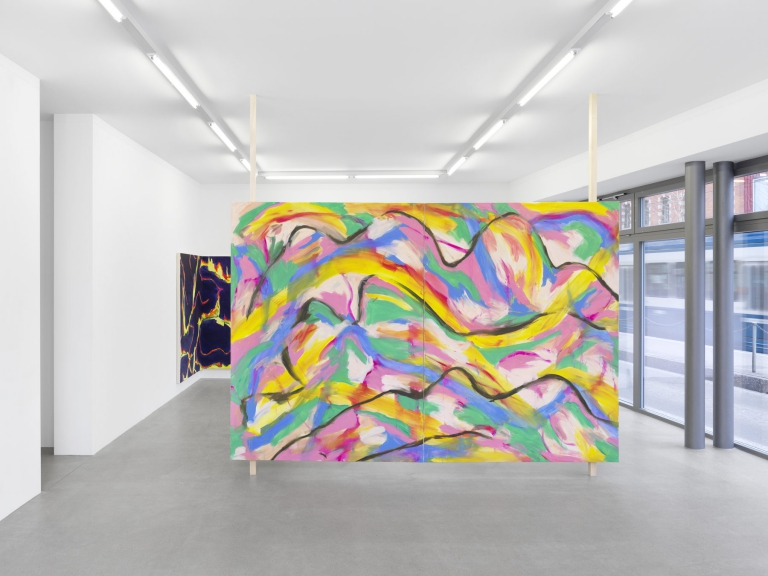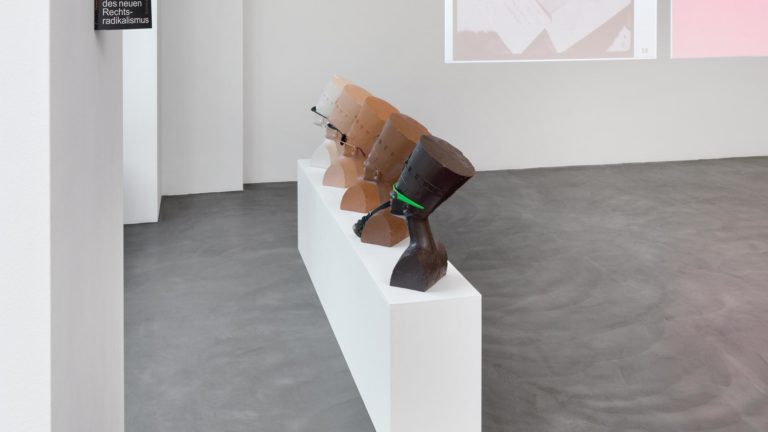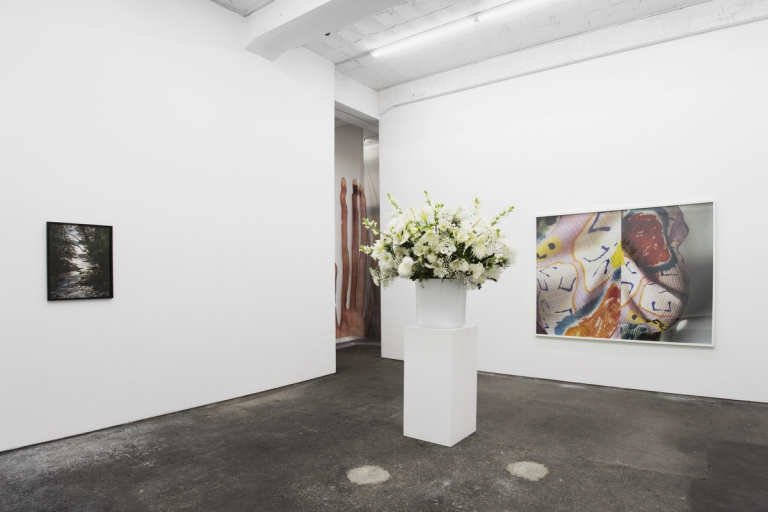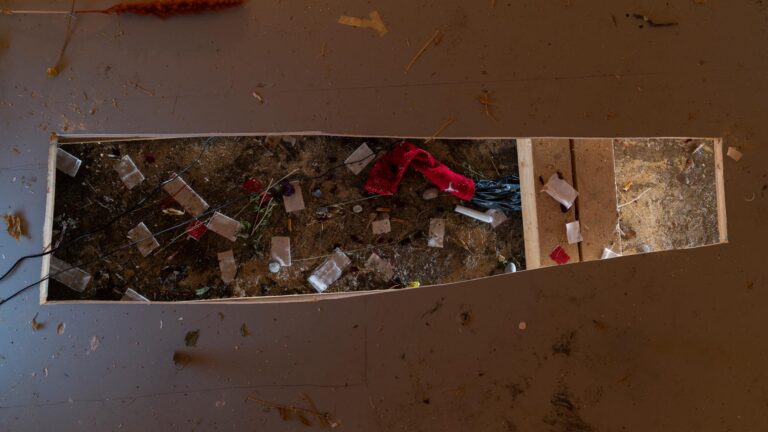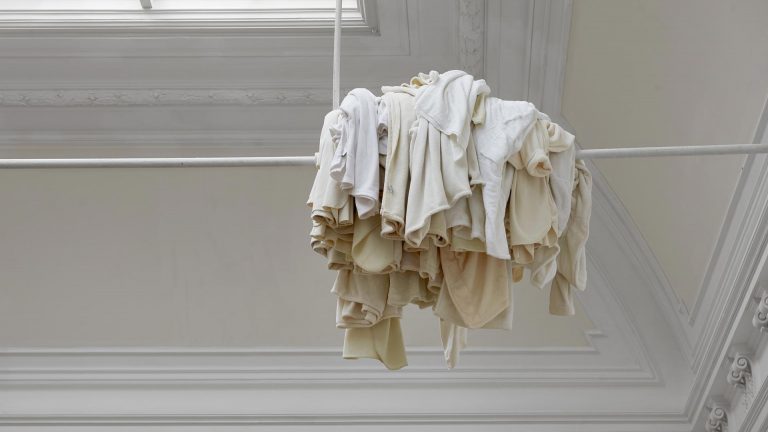Artist: Jan Kiefer
Exhibition title: HONEYBAKED
Curated by: Samuel Leuenberger and Elise Lammer
Venue: SALTS, Birsfelden, Switzerland
Date: February 19 – March 31, 2017
Photography: Gunnar Meier Photography, all images copyright and courtesy of the artist and SALTS
For his solo exhibition at SALTS, Jan Kiefer decided to embark on the exploration of the psychological concept of greed, developing an entire new body of work. On the outer walls hangs a vintage Rotamint slot machine produced by German NSM in the 1980s. The particularity is that it only accepts Swiss Franc coins, suggesting the machine was originally used in a national casino; the only place in the country where gambling is legal since 1933.
The gaming device is sheltered under a roof made with a 1.67 mm copper sheet, which is the exact thickness of a 1-cent Euro coin. The space can be entered through a slot door, whose narrowness seeks to obstruct passage. When able to make their way in, the viewer enters a carpeted space, where a series of large-scale and bi-colour paintings are hung. The six works, each shaped after the generic silhouette of a piggy bank, are handlacquered with a combination of elementary colours characteristic of national flag designs.
Once combined and re-contextualized, mundane objects such as piggy banks and gambling machines form a corpus that allows the artist to address more complex aspects of contemporary life.
In a precise methodology which consists in highlighting phenomena usually associated to popular culture, the artist proposes to question, from a sociological point of view, our relationship to money, and more particularly the human tendency to accumulate goods beyond need.
Humans distinguish themselves from animals through their ability to understand that they’re alive and therefore mortal. In most religious or philosophical systems, this consciousness is often accompanied by a persistent longing for immortality, which also seems to be a side-effect of the neo-liberal venture. Youth and wealth, expressed through vanity and greed, are the modern cults that govern the individual, often at the expense of others.
Emphasising the paradoxical nature of gambling, Kiefer encourages visitors to play slots with Sekt und Selters (2017), a machine originally conceived with low chances of winning. The popularity of wagering for money has often been associated with narcissism, insofar as the prospect of gain is more rewarding than gain itself. According to many countries where money games are regulated, the addiction-inducing aspect is what led governments to limit and tax them. However the statistical odds make legal gambling a very safe and stable income for whoever controls it.
A bold yet minimal gesture, a human-size slit now serves as the only entrance to the space. A discriminating access that seeks to highlight the aleatory and often biased aspect of money speculation, both in the corporate and entertainment worlds. Once slotted in, the slim body is commodified, ready to play (and be played with) in a gigantic money box.
Inside, the generic light-blue carpet and pseudo-flags both function as abstract evidences of a decaying global economy. Reminders of the ever-carpeted, bright-lit multinational lobbies, these vaguely corporate artefacts were purposefully stripped off their usual signifiers; here flags no longer stand for a specific geography, but only as pure evocations of nameless struggles and nationalisms.
Applied on piggy-bank shaped paintings, the geometric compositions not only suggest the de-territorialization and de-materilization of the economy, but also the rise of the artist as entrepreneur. Yet each brush stroke has been made visible, thus evidencing the artist’s presence, and ultimately, Kiefer’s coarse comment of the current economic system.





















